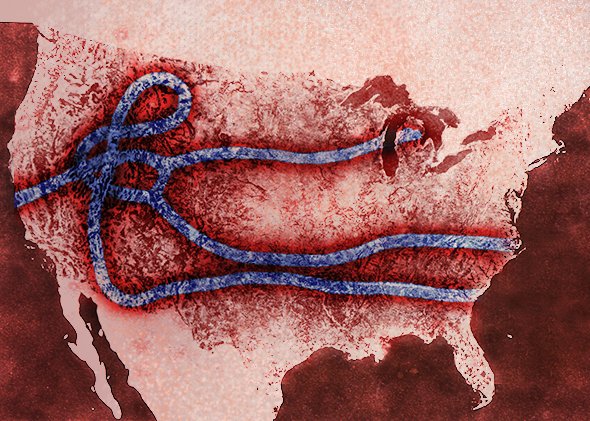
Was Ebola Engineered?
A very interesting article coming from Natural News today that raises the question: was Ebola engineered to target a specific group of people? The article states: New research shows that your genetic makeup could serve as a natural barrier to the deadly Ebola virus.
According to a new study published just days ago in the journal Science, researchers who infected a group of specially bred mice with the virus “saw a range of reactions, from zero [symptoms] to death by hemorrhagic fever,” The Washington Post reported, citing the study’s findings.

BYPASS THE CENSORS
Sign up to get unfiltered news delivered straight to your inbox.
You can unsubscribe any time. By subscribing you agree to our Terms of Use
Latest Video
The scientists were studying the varied reactions to the disease, and were specifically measuring how different genes in the mice altered the course of the viral infection. In doing so, researchers were able to determine which genes in humans are more vulnerable to death by the virus.
So… Ebola engineered?

The study is the first truly viable mouse study involving the Ebola virus, which has killed about 5,000 people in West Africa and elsewhere, making it the worst outbreak of the disease since it was discovered in 1976. The study’s results are important to the development of proper lifesaving treatments for the virus and even a successful vaccine, as well as “just trying to understand how it works,” the Post reported. In order for that to occur, researchers have to infect animals with similar DNA and genetic makeup in order to see how they react.
Disease is not always fatal Until now, the Post and other media reported, the best Ebola animal models have been monkeys: But monkeys are large, expensive to keep, and more dangerous to work with than tiny rodents. And they also present ethical issues. “Ask any scientist who does this type of work, and you’ll hear that they really want non-human primates to be a last resort,” said study co-head Angela Rasmussen, of the University of Washington department of microbiology, the Post reported.
Science World Report noted that the disease is not always fatal; there are people who can completely resist the disease, while others develop moderate to severe symptoms but recover. “Those who are most susceptible can eventually die from” it, the website said. That’s what makes the new study so important and revealing. The scientists noted that traditional lab mice were not appropriate for their study because, in the past, researchers have been able to alter the virus so that it always infects and kills them, without the rodents exhibiting normal symptoms of the hemorrhagic fever before death.
And, as the disease behaves so much differently in humans, it was difficult to use those mice in studies. “And while guinea pigs and hamsters have been made to show symptoms,” the Post reported, “their genomes are much less intricately studied than mice. Scientists know the mice genome in its entirety, so it’s easy for them to pinpoint what genes are involved in the disease and its treatment. Not so with these other animals.” It may not be necessary to completely eliminate it from the body “Unfortunately, monkeys were just the gold standard,” Rasmussen noted, adding in a press release: “The frequency and different manifestations of the disease across the lines of these mice screened so far are similar in variety and proportion to the spectrum of clinical disease observed in the 2014 West African outbreak.”
Scientists at the University of North Carolina at Chapel Hill created the genetically altered mice. They were bred with disease testing in mind, the Post noted. Most lab mice are only representative of about 10 percent of genes in the total mouse population; the specially altered mice represented 90 percent of the rodents’ genetic diversity. The BBC reported that 19 percent of the mice involved in the study demonstrated no symptoms of Ebola and were therefore unaffected by it.
However, 70 percent of them became extremely sick, with many showing signs of inflammation of the liver. An even larger percentage had blood that took too long to clot, leading to internal bleeding, swollen spleens and changes in the color of their livers. In addition, they had more than a 50 percent chance of succumbing to the disease. Andrew Easton, professor of virology at the University of Warwick, told the BBC that, while the study was useful, it could not directly be applied to humans because of their much larger genetic varieties. Still, he admitted that the data showed that “it may not be necessary to completely eliminate Ebola virus from the body during infection to ensure that there is no disease, and that reduction of virus growth in the body may offer alleviation from some aspects of the disease.”
So, what do you think, is it possible that this is “Ebola engineered” or is it possible it is something else?


